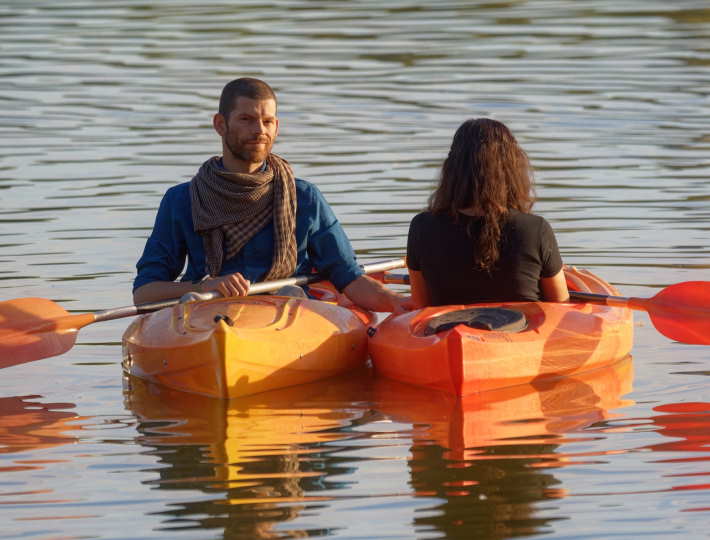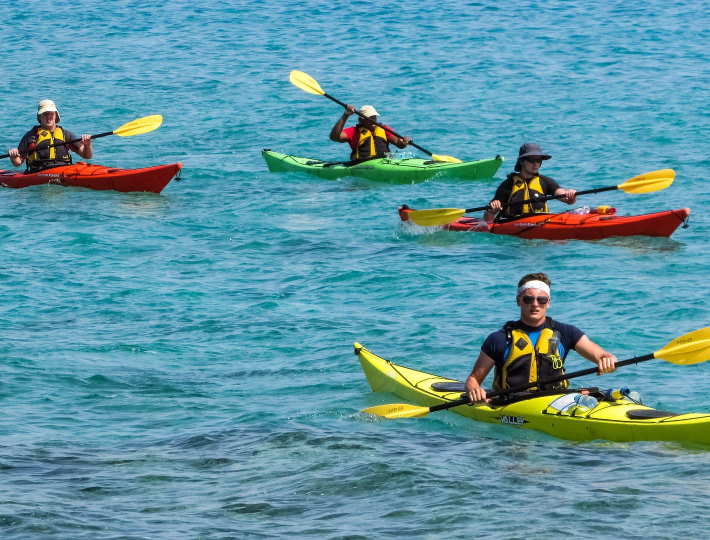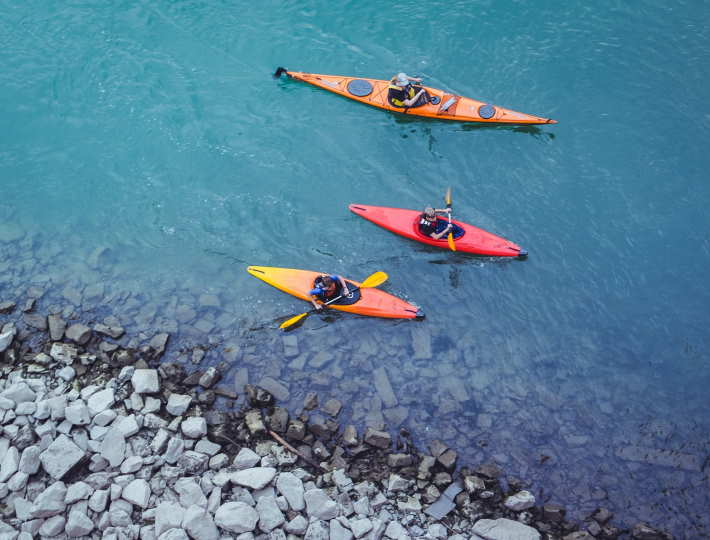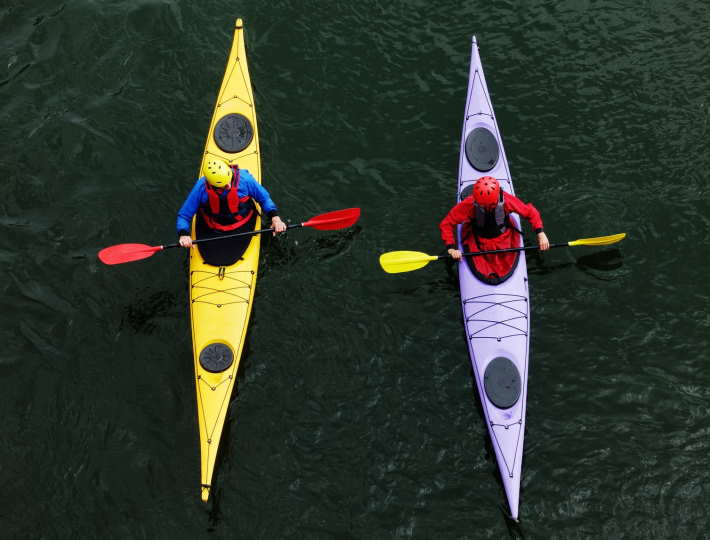In the vast world of fishing, kayak fishing has been gaining immense popularity due to its thrill, versatility, and connection with nature. Whether you’re a seasoned angler looking to try something new or a beginner eager to learn the ropes, we will guide you through the essentials of kayak fishing. From choosing the right kayak and essential gear to mastering basic techniques, planning successful fishing trips, and handling your prized catches, get ready to dive into the exciting world of kayak fishing. Gear up and prepare to embark on an unforgettable adventure on the water!
Choosing The Right Kayak For Fishing

In the world of fishing, there are many tools and techniques that can enhance your experience on the water. One popular and exciting method is kayak fishing. Imagine gliding across the tranquil surface of a lake, surrounded by nature, while waiting for the perfect catch. But before you can embark on this adventure, you need to choose the right kayak for fishing.
When it comes to selecting a kayak for fishing, there are several factors to consider. The first is the type of kayak you want. There are sit-on-top kayaks, which are more stable and easier to maneuver, and sit-inside kayaks, which provide better protection from the elements. Choosing the right type of kayak for your fishing needs is crucial to ensure your comfort and safety on the water.
Another important factor to consider is the size of the kayak. The length and width of the kayak will determine its stability and maneuverability. A wider kayak provides more stability, making it easier to stand up and cast your line. On the other hand, a longer kayak is faster and tracks better, allowing you to cover more distance in less time. Consider your fishing style and the waters you’ll be exploring when deciding on the size of your kayak.
Additionally, the weight capacity of the kayak should be taken into account. You’ll want to ensure that the kayak you choose can safely support not only your weight but also the weight of your fishing gear and any potential catch. It’s always better to have some extra capacity, so you’re not limited in the size or quantity of fish you can bring back to shore.
| Type of Kayak | Stability | Maneuverability | Best For |
|---|---|---|---|
| Sit-on-top | High | Easy | Beginners, recreational fishing |
| Sit-inside | Medium | Better protection | Cold weather, longer trips |
Lastly, don’t forget about the accessories and features that can enhance your fishing experience. Look for a kayak that offers built-in rod holders to keep your fishing rods secure while you paddle. Consider a kayak with a comfortable seat so you can spend long hours on the water without feeling fatigued. And if you plan to fish in low-light conditions, opt for a kayak with built-in navigation lights for added safety.
Essential Gear And Equipment For Kayak Fishing

When it comes to kayak fishing, having the right gear and equipment is essential for a successful and enjoyable outing. The thrill of catching a big fish from your kayak is unmatched, but it’s important to be prepared. Here are some must-have items for any kayak fishing enthusiast:
1. Kayak: The first and most obvious piece of equipment you’ll need is a kayak. There are different types of kayaks available, such as sit-on-top or sit-inside, and it’s important to choose one that suits your fishing needs and preferences. Make sure it is stable and comfortable to sit in for long periods.
2. Paddle: A reliable paddle is essential for maneuvering your kayak through the water. Look for a paddle that is lightweight and has adjustable length settings. This will allow you to paddle efficiently and comfortably.
3. Personal Flotation Device (PFD): Safety should always be your top priority. A PFD, also known as a life jacket, is a crucial piece of equipment that can save your life in case of an emergency. Make sure you choose a PFD that is specifically designed for kayaking and fits you properly.
4. Fishing Rod and Reel: Of course, you’ll need a fishing rod and reel to catch those big fish. Opt for a shorter fishing rod, around 6 to 7 feet in length, as longer rods can be difficult to handle in a kayak. Consider a spinning reel that is lightweight and can handle various types of fish.

5. Tackle and Bait: Stock up on a variety of fishing tackle and bait to increase your chances of a successful catch. Carry a selection of hooks, sinkers, lures, and live bait. Be sure to pack them in a tackle box or bag for easy access and organization.
6. Anchor System: An anchor system is crucial for maintaining your position and preventing your kayak from drifting away. Look for an anchor that is specifically designed for kayaks and is easy to deploy and retrieve.
7. Dry Bags and Storage: Keep your belongings and essential items dry by investing in a couple of dry bags. These waterproof bags are great for keeping your phone, wallet, extra clothing, and other valuables safe and dry while you’re out on the water. Additionally, consider a kayak with built-in storage compartments or add-on storage options for convenience.
8. Safety Whistle and Lighting: It’s important to have a safety whistle and lighting equipment with you in case of emergencies or low visibility conditions. A whistle can help attract attention, and lights can make you more visible to other boaters.
9. Navigation Tools: Depending on your kayaking location, you may need navigation tools such as a compass or a GPS device. These tools can help you navigate through unfamiliar waters and ensure you stay on track.
10. First Aid Kit: Accidents can happen, so it’s wise to have a basic first aid kit on board. Pack essentials like bandages, antiseptic ointment, pain relief medication, and any necessary personal medications.
| Item | Importance |
|---|---|
| Kayak | Essential |
| Paddle | Essential |
| Personal Flotation Device (PFD) | Essential |
| Fishing Rod and Reel | Essential |
| Tackle and Bait | Important |
| Anchor System | Important |
| Dry Bags and Storage | Important |
| Safety Whistle and Lighting | Important |
| Navigation Tools | Important |
| First Aid Kit | Important |
Mastering Basic Kayak Fishing Techniques

Kayak fishing is not just a hobby, it’s a way of life. There’s something about the thrill of being out on the water, the sun on your face, and the tug of a fish on your line that can’t be beat. But before you can become a master angler, you need to learn some basic kayak fishing techniques. We’ll explore the top tips and tricks to help you level up your kayak fishing game.
First and foremost, it’s important to choose the right kayak for fishing. Stability is key when you’re out on the water, so look for a kayak with a wide, flat bottom. This will help prevent you from tipping over and taking an unexpected plunge into the water. Additionally, a kayak with plenty of storage space is essential for keeping all your gear organized and easily accessible.
Once you have the perfect kayak, it’s time to talk about gear and equipment. A dependable paddle is a must-have for maneuvering through the water and reaching those prime fishing spots. Don’t forget to invest in a life jacket as well, as safety should always be your top priority. Other essential gear includes a tackle box filled with all the necessary lures, hooks, and lines, as well as a rod holder to keep your rod secure while you paddle.
Now that you have your kayak and gear sorted, it’s time to dive into the techniques that will make you a kayak fishing pro. Balance is crucial when you’re casting your line, so practice shifting your weight and maintaining stability. Keep your eyes on the prize and scan the water for any signs of movement or baitfish. Remember to cast with conviction and aim for highly productive areas such as submerged structures or weed beds.
When you feel a fish bite, it’s important to remain calm and not jerk your rod. Instead, reel in slowly and let the fish tire itself out. This will prevent your line from breaking and increase your chances of landing a big catch. Once you’ve successfully caught a fish, use a net to carefully bring it into your kayak and handle it with care.
Planning And Preparing For A Successful Kayak Fishing Trip

Going on a kayak fishing trip can be an exciting and thrilling adventure. But before you hit the water, it’s important to plan and prepare to ensure a successful and enjoyable experience. Here are some essential tips and tricks to help you get ready for your kayak fishing trip:
Research Your Fishing Spot: The first step in planning a successful kayak fishing trip is to research your fishing spot. Whether you’re heading to a local lake or exploring a new river, make sure to gather information about the area. Look for fishing reports, local regulations, and any special rules or restrictions that may apply. Knowing the fish species that are common in the area and their feeding habits can help you choose the right bait and increase your chances of catching a big one.
Check the Weather Conditions: Weather conditions can greatly impact your kayak fishing trip. Before heading out, check the weather forecast for the day. Keep an eye on any upcoming storms or high winds that could make the water choppy and unsafe for kayaking. It’s always a good idea to dress in layers and pack additional clothing to stay warm and dry throughout the day. Don’t forget to bring sunscreen and a hat to protect yourself from the sun’s harmful rays.
Prepare Your Kayak and Gear: A well-equipped kayak is essential for a successful fishing trip. Make sure your kayak is in good condition, with no leaks or damages. Secure all your gear properly and ensure everything is easily accessible. Pack your fishing tackle, rods, reels, and any additional equipment you may need. Don’t forget to bring a life jacket and other safety gear, such as a whistle and a first aid kit. It’s also a good idea to bring a dry bag to keep your belongings protected from water splashes and potential capsizing.
Make a Checklist:
- Research Your Fishing Spot
- Check the Weather Conditions
- Prepare Your Kayak and Gear
- Bring Appropriate Safety Gear
- Dress Accordingly and Pack Extra Clothing
- Stay Hydrated and Bring Snacks
- Let Someone Know Your Plans
- Have Fun and Enjoy the Experience
| Essential Gear Checklist: |
|---|
| Kayak |
| Paddle |
| Fishing Tackle |
| Life Jacket |
| Whistle |
| First Aid Kit |
| Dry Bag |
Tips For Catching And Handling Fish While Kayak Fishing

Kayak fishing can be an exciting and thrilling experience, but it also requires some skills and knowledge to be successful. One important aspect of kayak fishing is knowing how to catch and handle fish properly. We will provide you with some useful tips to help you improve your fish-catching game and handle your catch with care.
1. Choose the right fishing spot: When kayak fishing, it is crucial to choose the right fishing spot. Look for areas where fish are likely to gather, such as around structures like rocks, vegetation, or underwater ledges. These areas provide shelter and food sources for fish, increasing your chances of a successful catch.
2. Use the right bait and lures: The type of bait or lures you use can greatly affect your success in catching fish. Research the species of fish you are targeting and find out their preferred bait or lures. Make sure to have a variety of options in your tackle box to adapt to the changing conditions or fish preferences.
3. Practice proper casting technique: Mastering the art of casting is essential for a successful fish catch. Practice your casting technique beforehand to ensure accuracy and precision. Be mindful of your surroundings and make sure you can maneuver your kayak without getting tangled in vegetation or underwater obstacles.
4. Play and tire the fish: When you finally hook a fish, it is important to play it properly. Using a lighter and more flexible fishing rod specifically designed for kayak fishing can help in preventing excessive strain on your arm. Allow the fish to tire itself out by gently reeling it in while maintaining a steady pressure.

| 5. Use a landing net: | 6. Handle with care: |
|---|---|
| Using a landing net can make it easier to bring the fish on board without losing it. Make sure to choose a net with a size suitable for the fish you are targeting. Guide the fish into the net gently to avoid sudden movements or injuries. | Once you have successfully caught the fish, it is essential to handle it with care. Wet your hands before touching the fish to minimize damage to their protective slime layer. Avoid squeezing or applying excessive force, as this can harm the fish’s internal organs. If you plan to release the fish, do so gently and ensure it is fully revived before letting it swim away. |
7. Practice proper catch and release: If you are practicing catch and release, it is important to follow proper procedures to increase the fish’s chances of survival. Remove the hook gently and swiftly using a fishing tool, minimizing injury and stress to the fish. Release it back into the water as soon as possible, ensuring it has fully recovered before letting it swim away.
8. Stay safe: Last but not least, always prioritize safety while kayak fishing. Wear a life jacket at all times, stay aware of your surroundings, and check weather conditions before heading out. It’s also a good idea to inform someone about your fishing trip plans and estimated return time.
By following these tips, you can enhance your skills in catching and handling fish while kayak fishing. Remember, it’s not just about the catch itself but also about enjoying the experience and respecting the environment. Happy fishing!




